
Ask DadPad, Parenting Advice, Safety, Sleep
Ask DadPad: How do I keep my baby safe and warm at night in winter?
Posted on 6th December 2022
With the Met Office yesterday issuing an upcoming amber level cold weather alert for parts of England, and a yellow level snow warning already in place for Scotland for tomorrow, it’s becoming increasingly clear that winter is now definitely with us. Add in the fact that we’re all concerned about rising energy prices, and many new parents might now be thinking of cost-saving ways to keep their precious new babies warm and cosy, especially whilst they sleep. However, before you tuck baby in under a snuggly pile of blankets and duvets, it’s important to first of all make sure that you’re following all the best safer sleep advice, to ensure their safety and wellbeing.
[Not got time to read this whole blog post? Check out our new feature – The TLDR Summary – at the foot of the page…]
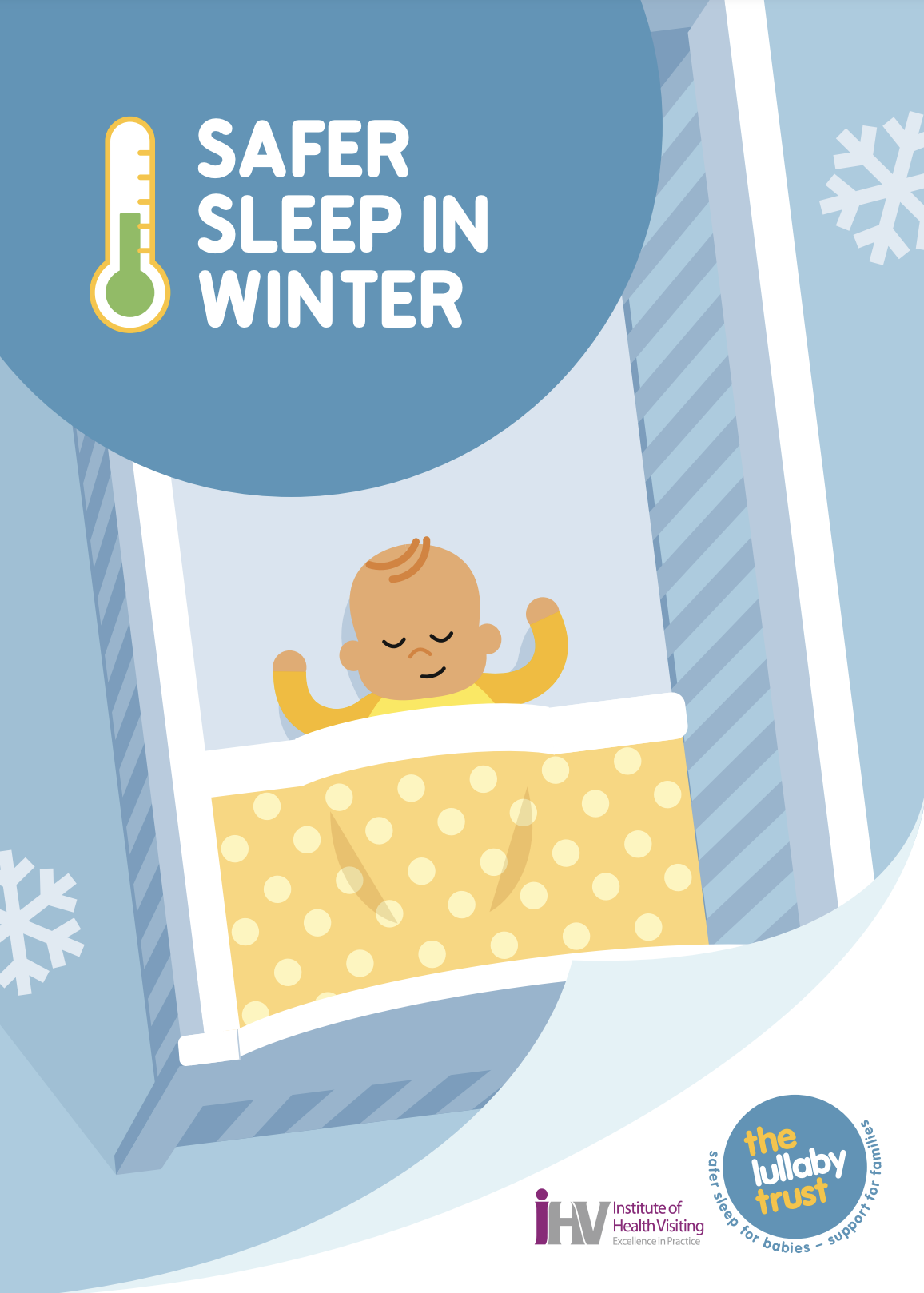
Trusted sources of safer sleep advice
Whenever guidance is needed on safer sleep for babies, the best source of advice is always going to be the The Lullaby Trust, and the good news is that they already have in place both a webpage and a downloadable leaflet setting out all you need to know about keeping your baby safe while they sleep in winter.
As always, we recommend that you start with a refresher of the core safer sleep advice, which we have covered in our ‘How do I keep my baby safe while they sleep?’ blog from last year, and also our ‘Every Sleep Counts’ blog, which looked at some of the developmental reasons in babies which means that their risks during sleep are higher and need to be better guarded against than for older children and adults.
The Every Sleep Counts programme – from the Safeguarding Children Partnerships team in Hampshire and the Isle of Wight – includes a simple key message on safer sleep for babies:
The safest place for your baby to sleep is on their back in a cot or Moses basket in the same room as its parents/carers for the first six months.
Baby should also always be placed in the ‘feet-to-foot’ position, with their feet at the bottom of their cot/Moses basket, and their sleep space should be kept clear – with no cot bumpers, toys, pillows, loose bedding etc.
Key considerations that might additionally impact on safer sleep during the winter include:
Night clothes
Our natural inclination as parents is always to try snuggle and wrap up our tiny, delicate babies from the cold, but it’s important to get the balance right. For example, babies should NEVER be put to sleep with a hat on, as this can quickly cause baby to dangerously overheat, which can lead to tragic outcomes. This is because new babies aren’t easily able to regulate their body temperature and their head is the site of up to 85% of the heat that their body loses (and so a key way for them to cool down if they start to get too hot).
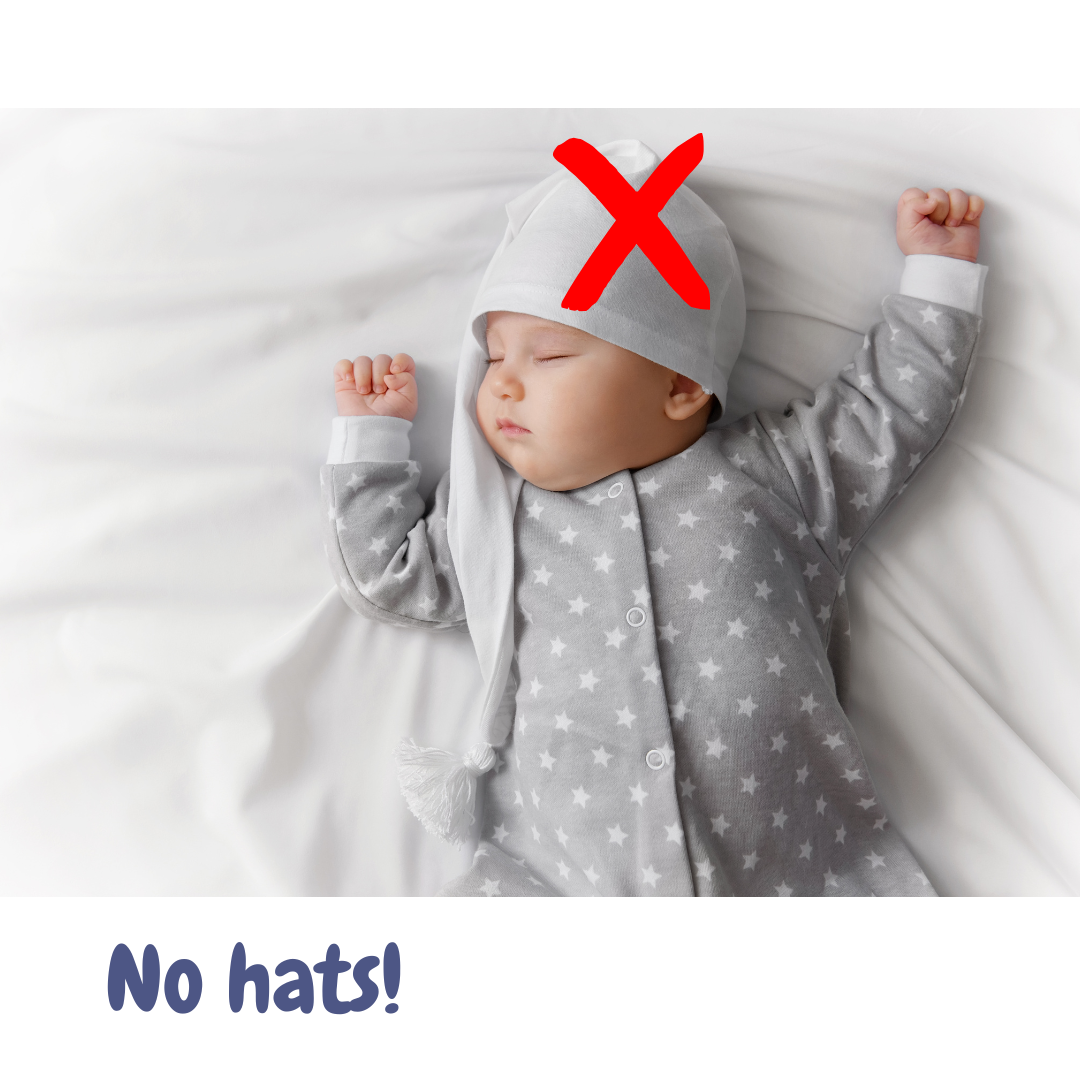
Similarly, make sure the night-clothes that you dress baby in are appropriate for the season. If you’re dressing baby in a baby sleeping bag, always make sure that it’s the correct size (and these are usually based on weight, rather than age), so baby can’t wriggle down inside it and possibly suffocate, and also check the guidelines on use that came with the sleeping bag. The Lullaby Trust also recommends not adding blankets or other bedding on top of a sleeping bag: instead, if you are worried that baby won’t be warm enough, add an extra layer of clothing or choose a higher-tog sleeping bag instead.
The suggested way to check whether your baby is too hot (or too cold) is to feel their chest and/or the back of their neck. The Lullaby Trust advise to check:
…that their skin doesn’t feel clammy or sweaty to the touch (their hands and feet will always feel cold to touch). Warm is fine, but if it feels sweaty or clammy it means they are too hot so remove a layer of bedding or clothing.
Bedding
If your baby isn’t in a baby sleeping bag, you’ll want to have some bedding to cover them when they sleep. The Lullaby Trust’s advice is to always – even in winter – use lightweight bedding rather than thick, fleecy or padded blankets or duvets. If you’re concerned that’s not sufficient for them to keep warm, then the recommendation is to either add an extra layer of clothing or an extra lightweight blanket.
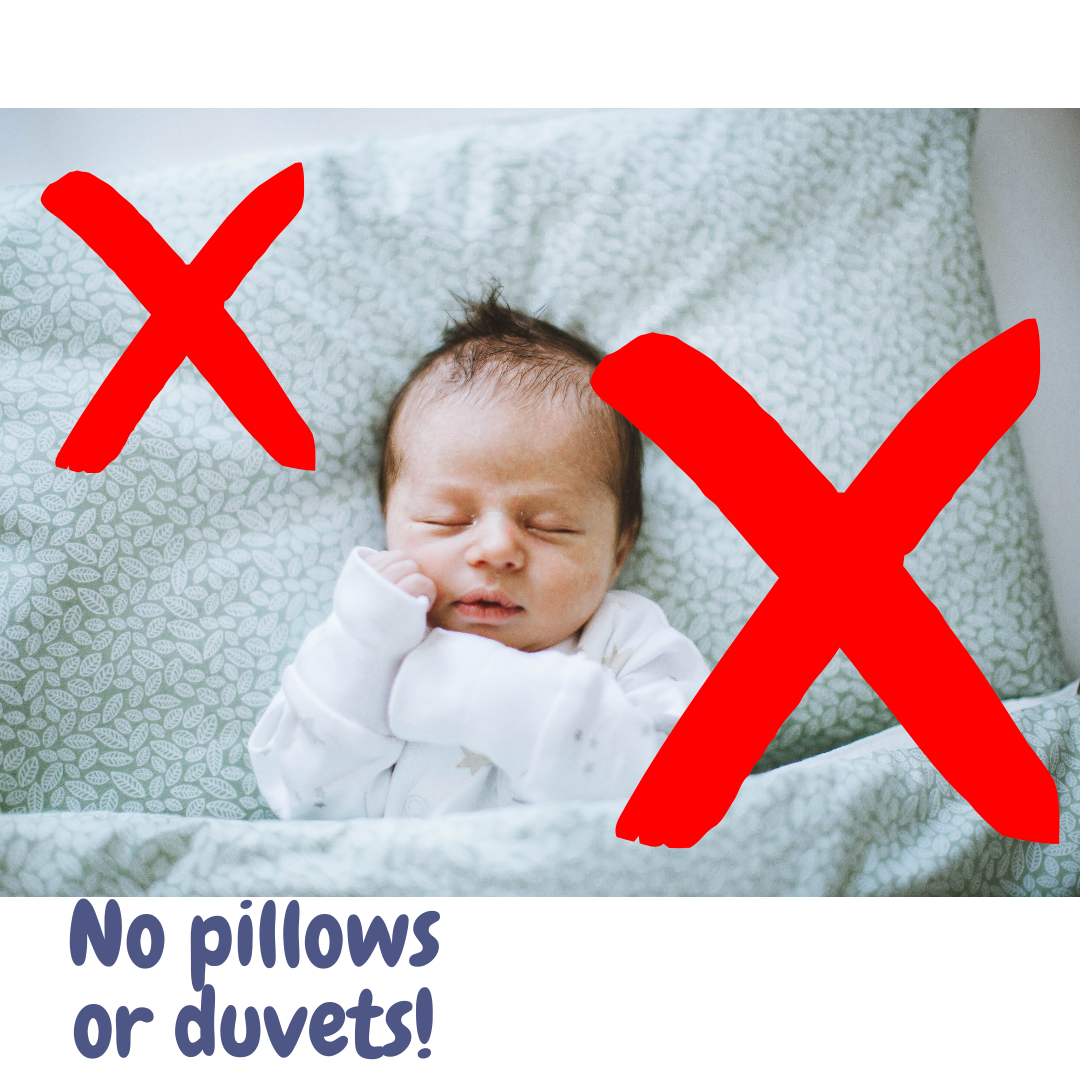
Any bedding that is placed over baby should always be firmly tucked in and should come no higher up than baby’s shoulders. As noted above, baby should also be in the feet-to-foot position in their cot. This is all to reduce the risk of baby’s face or head becoming covered by any loose bedding, which could cause breathing difficulties or suffocation.
Further safety points are that you should NEVER use hot water bottles, electric blankets etc in baby’s sleep space, and The Lullaby Trust also emphasise that weighted items – such as blankets, swaddles or sleeping bags – are not recommended for babies under one year of age.
Room temperature
All year round, the advice for the optimum temperature for the room in which baby sleeps is that it should be between 16-20°C. Thermometers for baby’s room are relatively easily and cheaply available, if you aren’t sure of the temperature (you can, for example, see a recent overview of some of the best baby room thermometers around at present via the Mother & Baby website).
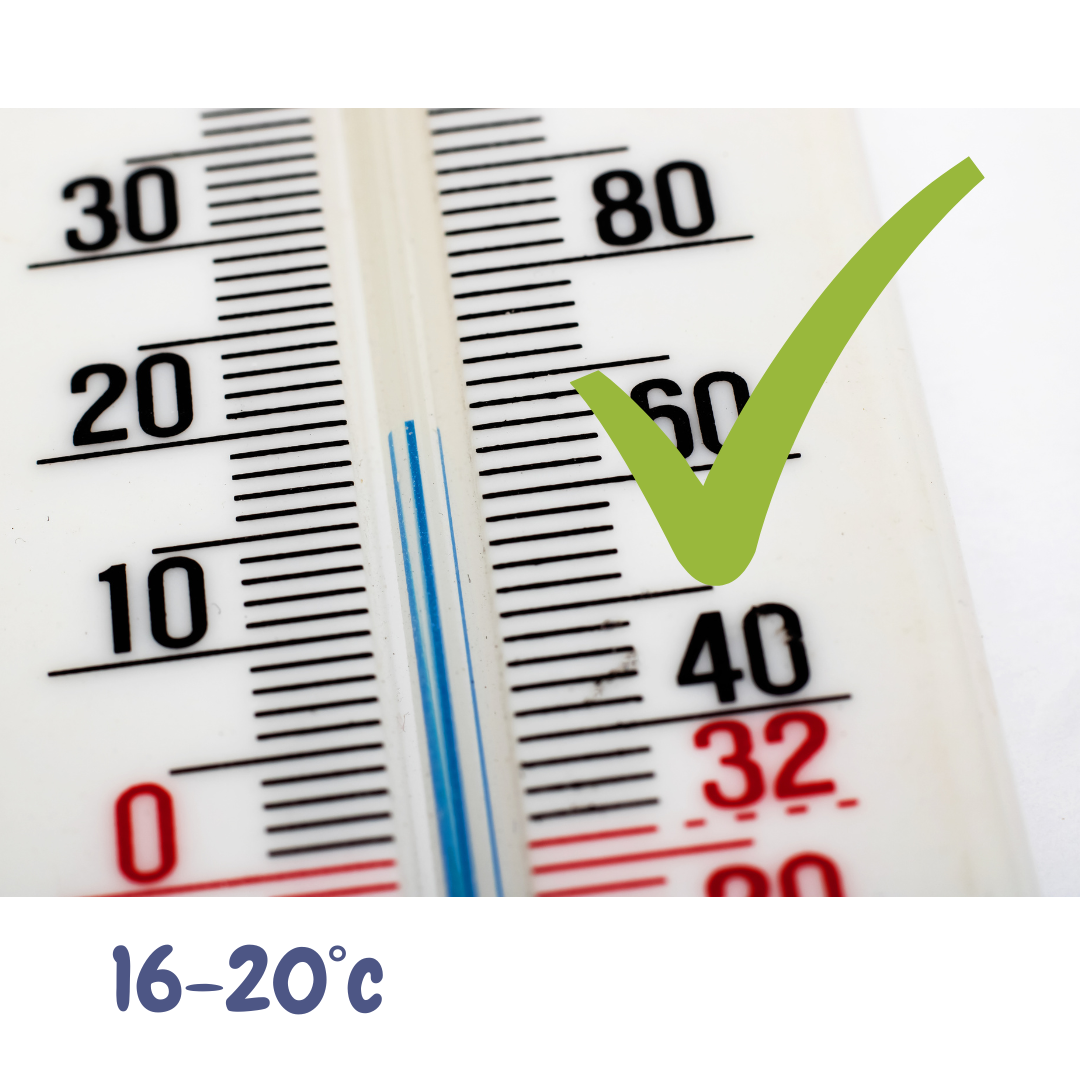
However, baby (or their cot/sleep space) should NEVER be placed near or next to a source of heat – such as a radiator, a heater or a fire – as this of course again increases the risk of them overheating.
Daytime sleeps
There’s real potential for baby to overheat during daytime naps in winter, especially if you’re out-and-about when baby falls asleep, as they’re likely to be wrapped up warm in thick, outer clothing.
A particular set of risks relates to car travel, something that many of us will be embarking on over the festive season, to visit friends and families, and potentially over long-distances. It’s recommended that all hats and other outside clothing (coats, snowsuits, etc) are removed when placing baby in the car (not least because the wearing of a coat etc can also reduce the effectiveness of baby’s car seat safety harness in the event of a crash).
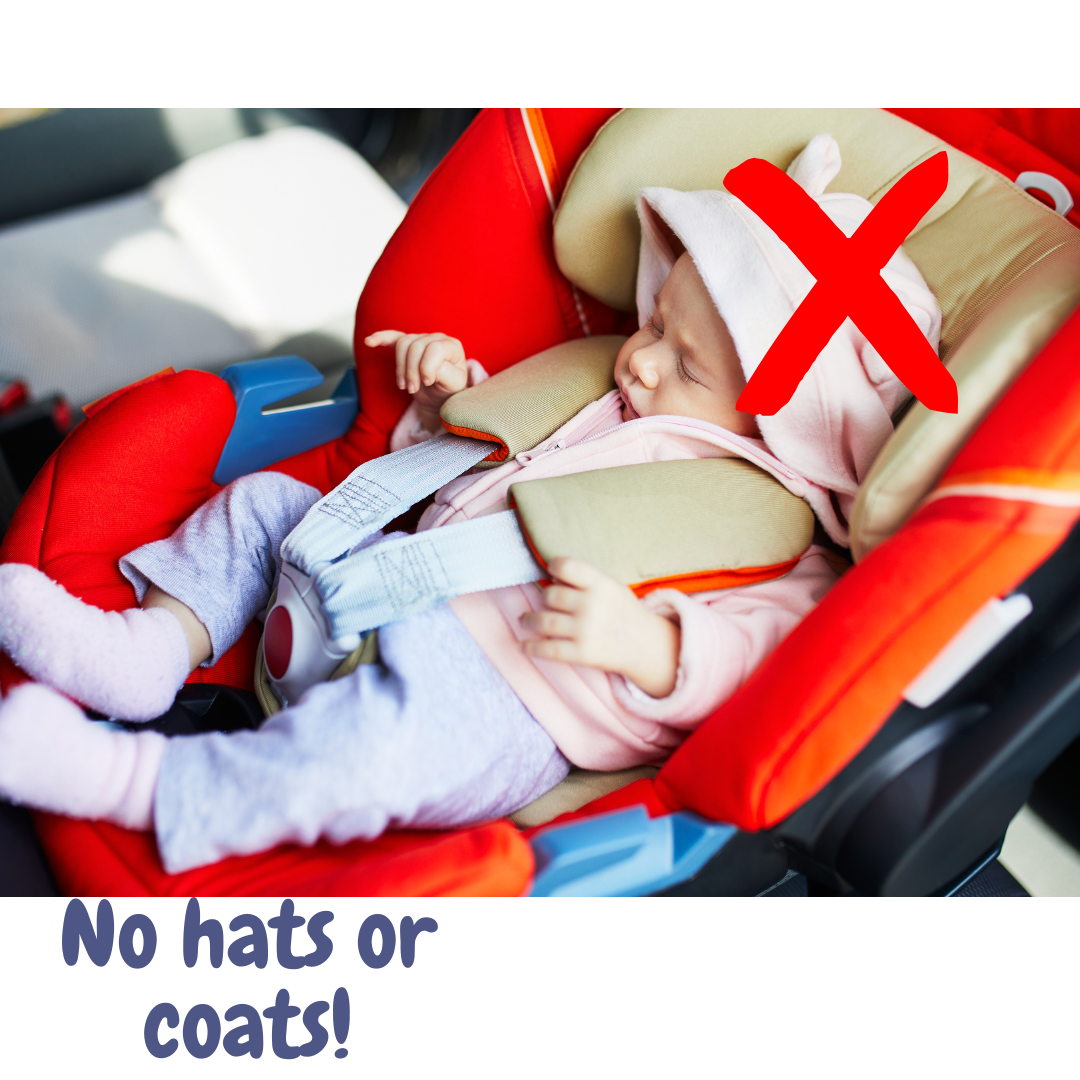
You should also:
- keep a regular eye on baby’s body temperature during the journey by checking how warm their chest or the back of their neck feels;
- be alert to the risk of baby’s head slumping forwards whilst sleeping, which can cause breathing difficulties, especially in very tiny babies. If there’s no one able to sit next to them to monitor and correct this, think about fitting a mirror which enables you to more easily check on them and, if you see them slump forwards, you should stop the car as soon as possible in order to reposition them;
- not allow them to sleep for too long in a car seat. The Every Sleep Counts team recommend that, during a journey, babies under six weeks of age should be taken out of their car seat every 30 minutes for a stretch, and the same should be done every hour once they are over six weeks. The Lullaby Trust website also suggests not leaving any baby in a car seat for more than two hours without a break; and
- if baby is asleep when you arrive at your destination, it’s recommended that you take them out of the car seat as soon as possible so that they can be placed in a safe, flat sleeping position (such as their cot).
Bedsharing
As per the Every Sleep Counts advice above, the safest place for baby is in their own sleep space, but The Lullaby Trust leaflet does include some useful info on bedsharing in winter, in addition to the standard co-sleeping advice, including the danger of baby overheating or suffocating from being under adult bedding. Instead, they advise the use of a baby sleeping bag.
Further, the adult’s body will of course be generating heat, so again this could further heat up baby.
As suggested above, though, do PLEASE download The Lullaby Trust’s leaflet and/or visit their webpage for all the key advice:
The TLDR Summary:
Even in cold weather, babies are at risk of overheating, which can lead to tragic outcomes. Further, babies are at risk of suffocating if loose items fall over their faces/heads.
- Fulfil the safe sleep message at all times, for ALL sleeps: Every Sleep Counts;
- No hats or outer clothing when baby is sleeping;
- Keep baby’s sleep space away from radiators, heaters, fires etc;
- If baby is wearing a baby sleeping bag, they shouldn’t also have bedding on top of them;
- Always use lightweight bedding on baby, rather than thick or fleecy blankets, duvets, etc;
- Baby’s bedding should always be tucked in, and placed in the feet-to-foot sleep position, with no loose items in their sleep space; and
- You can check your baby’s temperature by feeling their chest and/or the back of their neck.

